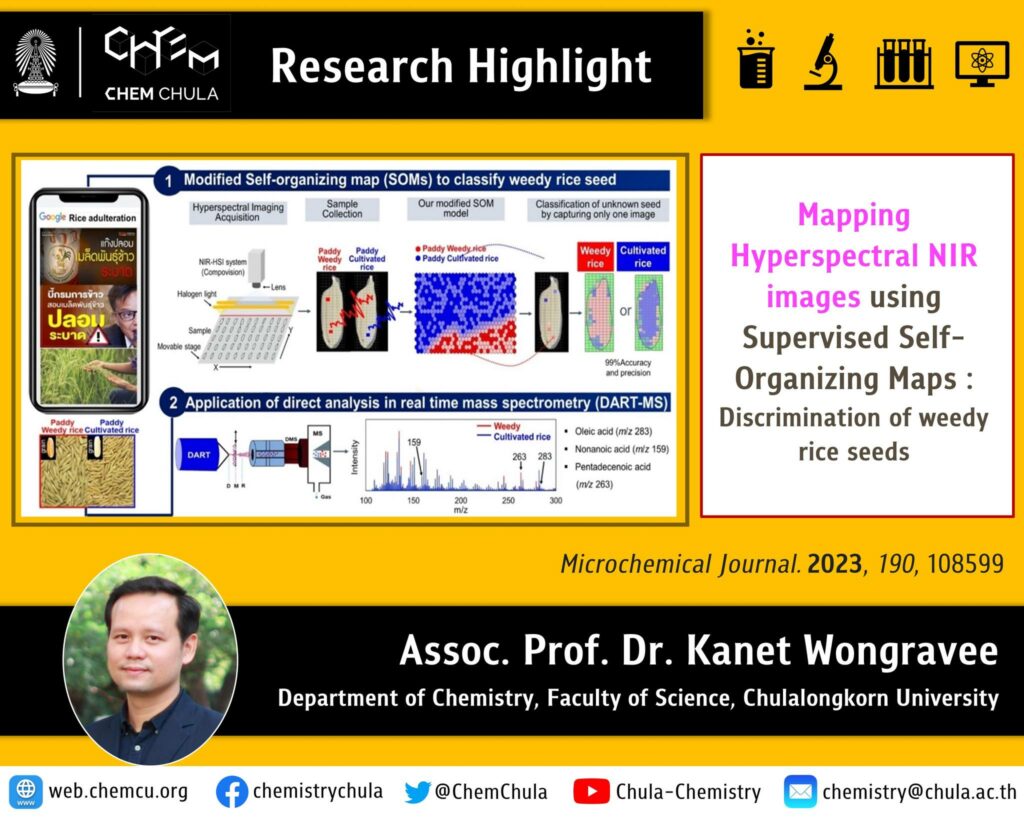Weedy rice is one of the most problematic weeds in rice-growing regions, particularly in Southeast Asia. Unlike other types of weeds, it is extremely difficult to distinguish weedy rice from cultivated rice directly from paddy seeds as they exhibit common morphological features. As such weed management can be a difficult, time-consuming, and inaccurate process that is often carried out manually. This study offers a novel classification approach based on an artificial neural network (ANN), utilizing self-organizing maps (SOMs), to directly discriminate weedy rice using the near-infrared (NIR) hyperspectral imaging (HSI) technique. Classification accuracies of 98% (Weedy vs PL2) were obtained with balanced sensitivity and specificity. The classification was assessed from the whole sample image, which was completely independent of the selected region of interest. This is the first instance where SOMs have been utilized to appraise seed quality by means of authentic HSI images.
- Kanet Wongravee
- Anupun Terdwongworakul
- Tirayut Vilaivan
- Simon Maher
- Sanong Ekgasit

